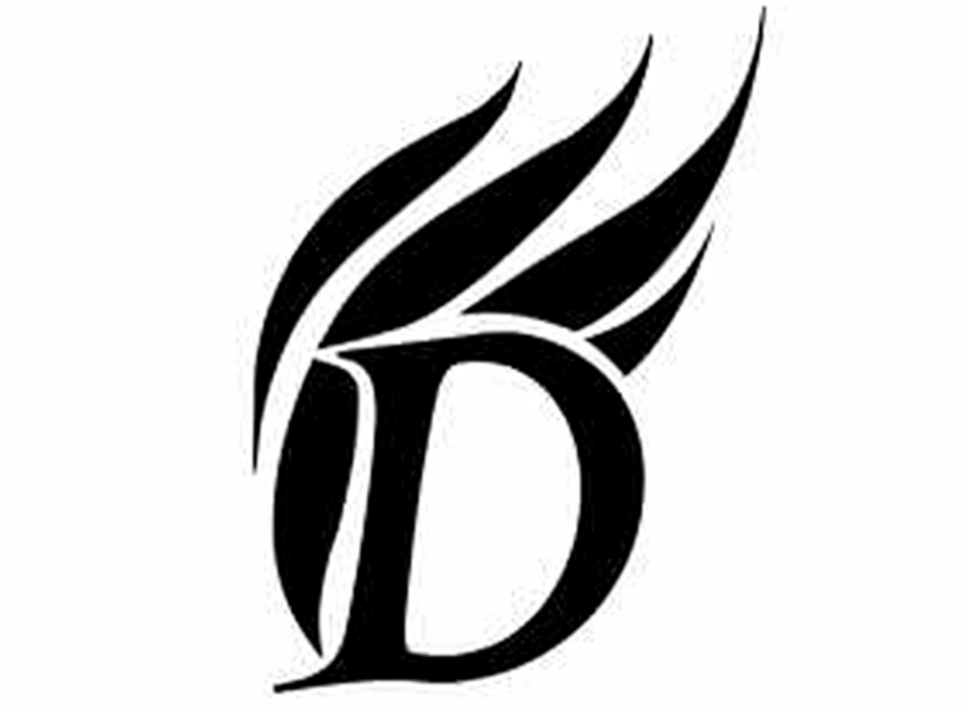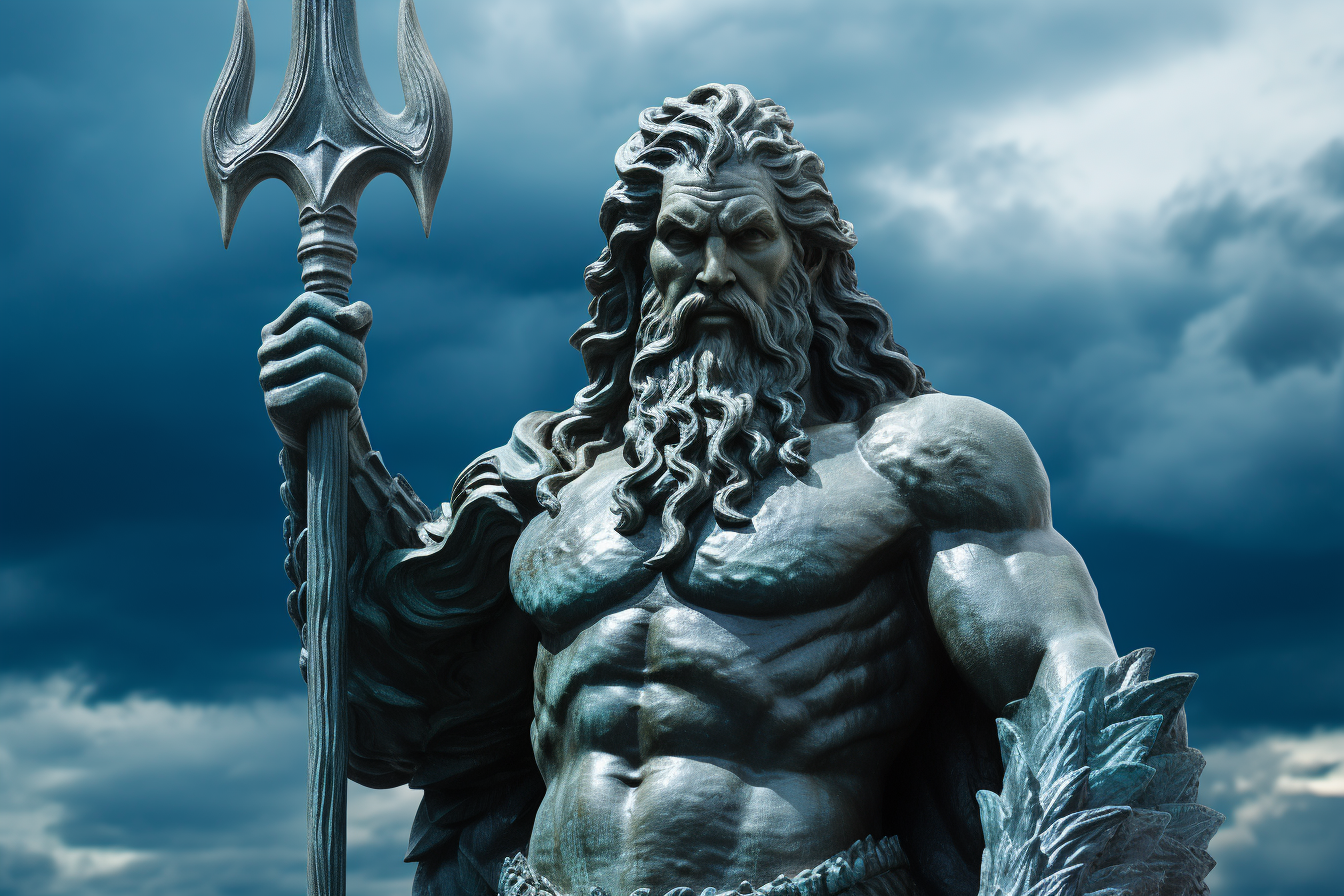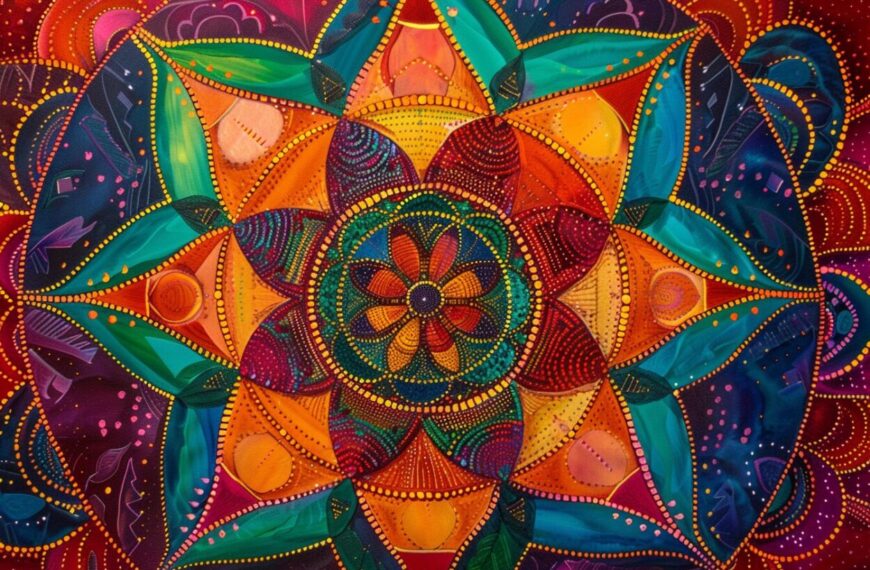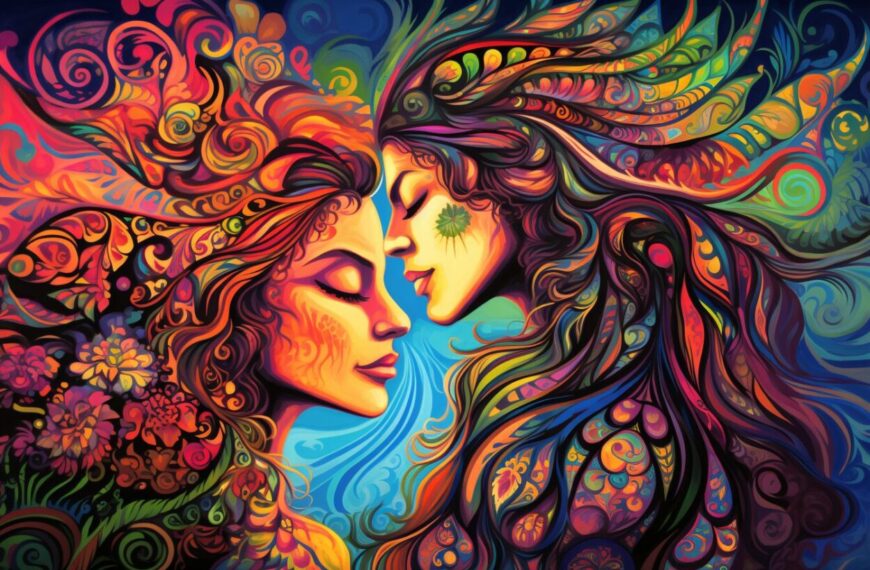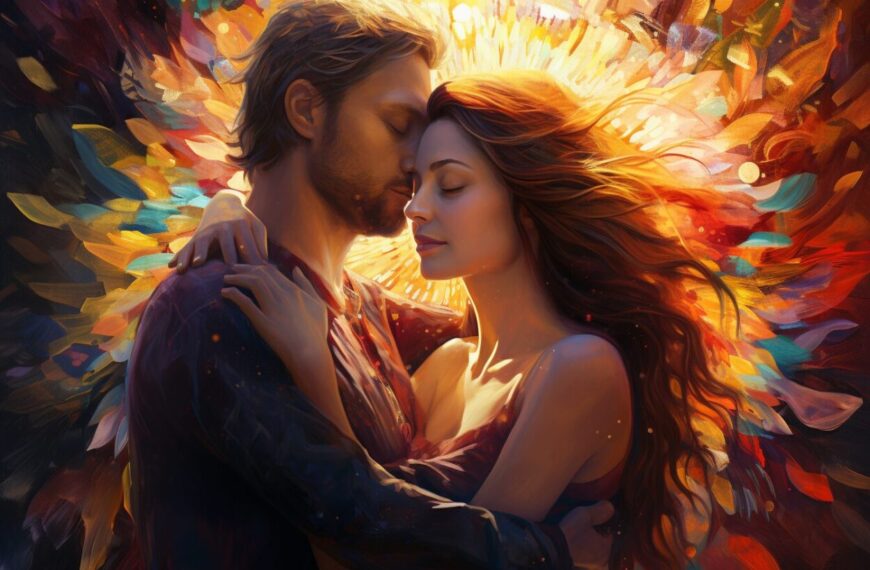Trident Symbolism & Meaning: Ultimate Guide
The trident symbolizes immense power. Its unmistakable and majestic form represents the divine mastery over oceans, seas, and rivers, embodying the concept of the triad. In certain cultural depictions, the trident takes the shape of a double-pronged thunderbolt, serving as a formidable weapon that symbolizes ultimate dominion over the sky, heaven, and earth.
In this article, we will explore the deep symbolism of the trident. We’ll uncover its fascinating impact on societies and cultures throughout history. Moreover, we’ll investigate the spiritual importance attached to the trident, revealing its profound meanings.
What is A Trident?
Trident is the weapon associated with Poseidon, the Greek god of the sea. Poseidon was one of the three powerful gods who ruled over the realms of gods and the underworld, along with Zeus and Hades. Fishermen initially used tridents to catch fish due to their three prongs, which provided better balance and a larger striking surface. Metaphorically, the term trident is used to describe objects and geographic regions that resemble the shape of a three-pronged spear.
Trident symbolism in Hinduism
Shiva, the Hindu God, is a complex deity worshiped by the Saivite sects in India. He embodies contradictory qualities as the destroyer and restorer, the ascetic and symbol of sensuality, the benevolent herdsman of souls, and the wrathful avenger. Shiva carries with Him a trident called Trishul, which has immense powers and symbolic meaning.
With the Trishul as his weapon, Lord Shiva engages in an inner battle. Rather than fighting external forces, the Trishul aids in gaining mastery over the mind, intellect, and ego. As we develop strength, we gradually detach ourselves from insignificant aspects of existence. We distance ourselves from the illusory physical world, dismantle the anguish caused by ego, and ultimately find solace in the enlightened realm of spirituality.

1. The Energy Channels
The Trishul symbolizes three energy channels in our body called Nadis. Ida represents the feminine energy called Nadi, while Pingala represents the active male Nadi. These channels represent the opposing forces found in the universe, represented by Shiva and Shakti. They run from our feet to the throat chakra, where they meet the Sushumna Nadi.
The Sushumna Nadi is important as it embodies the balanced male and female energies. When the Sushumna Nadi is activated, it brings about a state of harmony, and Shiva helps us tap into this energy for a more harmonious life.
Read More: Symbols of Harmony Across Cultures
2. The Gunas
This powerful trident was passed to the Goddess Durga – another significant figure in Hindu mythology with a powerful trident. According to Hindu mythology, when the world was threatened by a powerful demon named Mahishasura, the gods combined their energies and created Goddess Durga to defeat him. Durga, riding on a lion or tiger, waged a fierce battle against Mahishasura and ultimately vanquished him, symbolizing the triumph of good over evil.
Here the trident symbolizes Tamas, Rajas, and Sattva, which are known as the three Gunas. These are modes of existence that shape the nature of everything in the universe
- Tamas: Tamas is the Guna associated with inertia, darkness, and ignorance. It represents a state of heaviness, lethargy, and inactivity. When Tamas is dominant, it can lead to laziness, procrastination, and a lack of motivation. It is also associated with negative qualities such as greed, ignorance, delusion, and attachment. Tamas is considered the lowest and least desirable state of existence.
- Rajas: Rajas is the Guna associated with activity, passion, and restlessness. It represents a state of dynamic energy and desire. When Rajas is dominant, it can lead to ambition, drive, and a constant need for action. However, it can also result in attachment to outcomes, excessive desires, and uncontrolled emotions. Rajas is considered a higher state of existence compared to Tamas but is still seen as an obstacle to spiritual growth.
- Sattva: Sattva is the Guna associated with purity, harmony, and balance. It represents a state of clarity, knowledge, and goodness. When Sattva is dominant, it leads to a calm and balanced mind, spiritual growth, and the development of positive qualities such as compassion, wisdom, and selflessness. Sattva is considered the highest and most desirable state of existence, as it promotes spiritual evolution and leads to inner peace and liberation.
Read More: Symbols of Freedom Across Cultures and History

3. The 3 Points Of Time
The three-pronged trident also symbolizes the Past, Present, and Future. With the trident in his hands, Lord Shiva possesses absolute authority over the cycle of time.
4. The Hindu Holy Trinity
In Hinduism, there are 3 major deities that form the Trimurti: Brahma (the creator), Vishnu (the preserver), and Shiva (the destroyer). Each deity represents a specific aspect of the divine, and their union signifies the cyclical nature of creation, preservation, and dissolution.
- Brahma: the Creator Of Worlds
- Vishnu: the Preserver Of Worlds
- Shiva: the Destroyer Of Worlds
They are not considered separate gods but different aspects of the same ultimate reality or Brahman. Each deity has unique characteristics and functions, and together they represent the cosmic forces at work in the universe.
5. The Three Agnis
The Trishul symbolizes the three vital types of Agni in Ayurveda. Agni, the inner fire, empowers the body’s functions with unwavering strength. Jatharagni, residing in the abdomen, plays a pivotal role in digestion and metabolism. Bhutagni, housed in the liver, takes charge of nutrient absorption. At the cellular level, Dhatwagni utilizes external nutrients.
6. The Power Of The Vibrations
Sometimes the trident of Shiva also comes with a drum attached to the handle called the Damru. The drum itself is an object of sound, representing the power of sound waves, mantras, and vibrational energy. This symbol represents the power of our words, prayers, and mantras. Through sound, we connect to universal vibrations, summoning divine energy, raising our awareness, and finding clarity and connection on the spiritual path.
7. The Trishakti
Another concept in Hinduism that involves the trident symbolism is the Trishakti. “Tri” here simply means “three”, and “Shakti” is the divine feminine energy of power that represents that creative force of the universe. It is the combined power of three goddesses: Goddess Durga, Goddess Lakshmi, and Goddess Saraswati. These three goddesses is considered the primordial cosmic energy that manifests as the dynamic aspect of the Supreme Being, often personified as the Goddess or Devi.
Durga embodies the power and strength to overcome obstacles and protect against evil forces. Lakshmi symbolizes wealth, prosperity, and abundance. Saraswati represents knowledge, wisdom, and creativity.
8. Trident Symbolism In Astrology
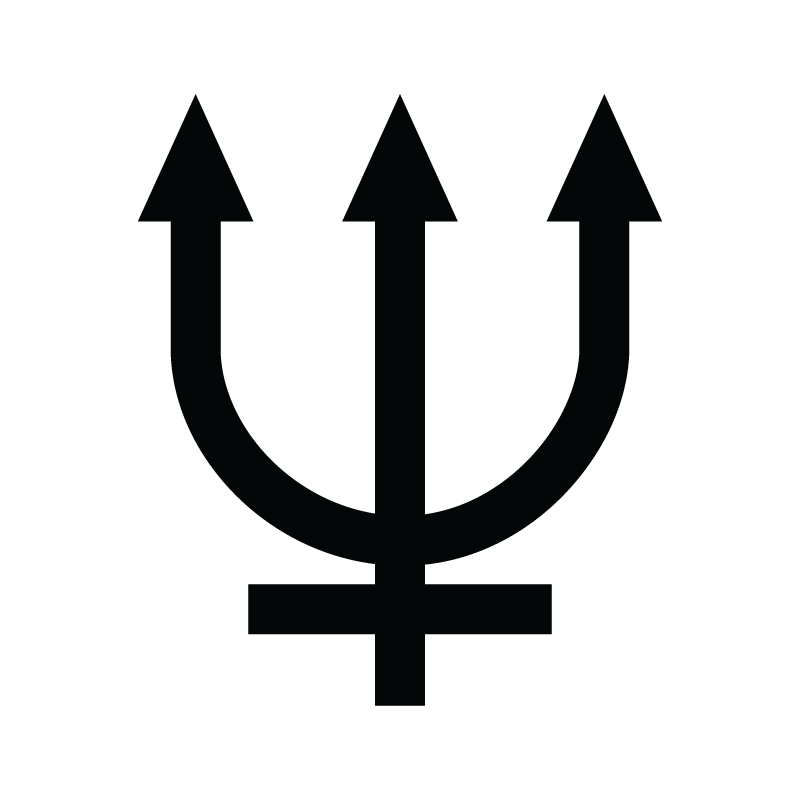
In astrology, the glyph of planet Neptune is a trident – and it is the trident of Poseidon. Interestingly, Neptune is governed by Pisces – the sign of the 2 fish residing in the vast and borderless ocean. Astronomically speaking, the planet has a unique and distinct blue resembling the ocean water.
This planet is associated with fluidity, change, and illusions, much like the vast oceans it rules. It governs dreams, illusions, abstract thinking, and the mysterious aspects of life. It places significance on our spirituality and encourages us to tap into its energy for personal growth. Neptune invites us to embrace its influence, allowing its energy to wash over us and accessing heightened awareness through meditation. Activities such as poetry, music, and dance resonate with Neptune’s trance-like nature.
The dark side of Neptune is like an old star that has lost its shine. People with strong Neptunian energy love to explore a world of substances, alcohol, altered states, and deep relaxation. Their unevolved energy manifests as a desire to escape reality, distorted perception, excessive worry about health, and unusual behaviors. Sleep and dreams are also influenced by Neptune – positive Neptune energy can express as dreams that bring groundbreaking insights, but negative Neptune energy brings a lot of disillusions and haunting dreams.
Trident symbolism in Buddhism

The trident symbolism also appears in Buddhism, specifically the Triratna symbol. The Triratna symbolizes the Three Jewels of Buddhism, namely the Buddha, the Dharma, and the Sangha. It is believed to have originated during the rule of King Ashoka, a prominent Maurya ruler in the 3rd century BCE.
The Triratna symbol is shaped by a trident – with 2 wings on the left and right being 2 golden fish, symbolizing Yamuna and Ganga rivers – the 2 holy rivers of India – signifying happiness and freedom. The center prong represents the four-fold assembly of monks, nuns, laymen, and laywomen.
Read More: Scorpion Symbolism in Arts, Cultures, and Mythologies
Below it is the Dhammacakra, the wheel of Buddha’s teachings, with an eight-petaled lotus inside, symbolizing the Noble Eightfold Path. It represents the continuous cycle of birth, suffering, and rebirth, and the path to liberation from this cycle. It is a visual reminder of the Buddha’s teachings on the middle way and the cessation of suffering.
The Triratna gained prominence in stupas like Sanchi and Amaravati, becoming an iconic representation of Buddhism. Rulers like Ashoka and Menander supported Buddhism, as seen in coins depicting the Triratna. This led to Buddhism spreading beyond India along the ancient Silk Road.
Trident symbolism in Norse mythology
The Helm Of Awe
The Helm of Awe, also known as Ægishjálmr in Old Norse, is a captivating and powerful symbol in Norse mythology. Its striking design alone can inspire a feeling of awe and fear. With eight arms resembling spiked tridents radiating from a central point, it gives the impression of being ready to defend against any surrounding threats and protect its core.

The Helm of Awe is also one of the notable symbols of strength around the world. It symbolizes the raw power of warriors on the battlefield.
Taoist Trident Symolism
The symbols of trident is not commonly associated with Taoism, but they do appear in the Trident Bell.
In Taoism, the Tao Te Ching is a book that talks about how everything in the world came to be. According to the book, there is something called the Tao, which is like the starting point of everything. The Tao then gave rise to One, which led to Two, and then Three. These numbers represent different stages of creation. One represents something called Wuji making Taiji, and Two represents Taiji creating Yin and Yang, which are opposing forces in the world.

The trident here symbolizes that very idea, with the middle prong being the “Tao”, while the 2 wings on the left and right represent the Yin and Yang of the universe. Many people who study Taoism believe that when Yin and Yang interact with a life force called Chi. When Yin and Yang are in balance and harmonious, there is health and harmony in life. When there is an imbalance or too much of one force, it can lead to problems and disharmony. The goal is to seek harmony and balance between Yin and Yang in all aspects of life.
Read More: Symbolism Of The Snake In Mythologies
Spiritual Meaning Of Tridents
1. Power And Strength
The trident symbolizes power, influence, and strength. It represents authority and control from ancient times to the present. As we have seen, Poseidon and Shiva – 2 powerful Gods in ancient cultures, were often portrayed holding a trident, symbolizing their rule over the world. Governments and military forces have also adopted the trident as a symbol of authority and strength. The trident’s significance transcends cultures and continues to hold meaning worldwide.
Read More: 15 Symbols of Strength Around The World
2. Trinity
The three-pronged structure symbolizes the concept of trinity around the world, and it holds significant philosophical importance as a triadic structure.
In Christianity, the Trinity refers to the belief in one God who exists in three distinct persons: the Father, the Son (Jesus Christ), and the Holy Spirit. This concept is central to Christian theology and understanding God’s nature. Although Christianity does not have any trident-like symbols, the idea of having a triadic structures as a center of the religion is still quite pronounced.

Beyond Christianity, the idea of threes also hold symbolic significance in many African cultures. For example, in ancient Egyptian mythology, the trinity of Osiris, Isis, and Horus represented creation, life, and rebirth, or in Hinduism, the Trimurti consists of Brahma, Vishnu, and Shiva, representing creation, preservation, and destruction.
The number three carries a sense of dynamic equilibrium, as it offers a middle ground between opposites. It also signifies progression or evolution, with the third element often acting as a mediator or catalyst between the other two. This provides a framework to explore relationships, interactions, and the interplay of opposing forces.
3. Royalty
The trident, a symbol of authority and dominance, has a long history spanning ancient civilizations. Dating back to the Greeks and Romans, this iconic emblem has represented power and rulership. Even today, the trident retains its regal connotation, symbolizing royalty across diverse cultures. For example, on ancient Greek coins, the presence of tridents indicated the sovereignty and control of city-states.

4. Spiritual Direction
The symbolism of tridents extends to the realm of spiritual direction, offering guidance and protection for our souls. Often associated with powerful gods and spiritual deities, tridents carry a profound significance in helping us navigate our spiritual paths.
Seeking spiritual guidance is a transformative journey, providing clarity during challenging times and assisting us in making important decisions. Its three prongs symbolize the harmonious balance of physical, mental, and spiritual energies, essential for attaining true happiness and self-realization.
Conclusion
In cultures worldwide, trident symbolism holds great significance. Tridents are powerful symbols found in various contexts and are associated with diverse meanings. They often represent attributes such as authority, dominance, and control. With their three prongs, tridents symbolize balance, strength, and the interconnectedness of physical, mental, and spiritual energies.
Moreover, tridents can symbolize divine power and protection. They are frequently associated with gods and deities who wield them as weapons of choice, signifying their ability to guide, govern, and provide spiritual direction. The enduring presence of tridents in religious traditions, mythology, and cultural symbols highlights their timeless symbolism and the universal recognition of their profound significance.
